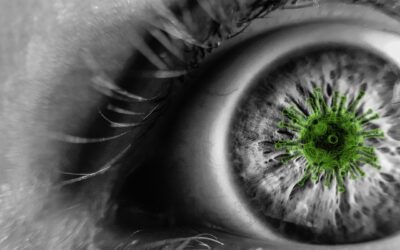Dry eye syndrome, a common ocular condition characterized by insufficient tear production or poor tear quality, can cause discomfort and irritation. Antibiotics are occasionally prescribed for dry eyes, but their role in managing this condition is sometimes disputed. While there may not be a clear or definitive answer, there is certainly a case to be made to utilize these medications in the care of dry eyes.
Understanding Dry Eye Syndrome
Dry eye syndrome results from an imbalance in tear production and quality, leading to symptoms like dryness, grittiness, redness, and blurred vision. Factors such as aging, hormonal changes, medications, environmental conditions, and autoimmune diseases can contribute to dry eye development. Treatment typically involves lubricating eye drops, lifestyle modifications, and in some cases, prescription medications.
Can Antibiotics Help Dry Eyes?
Antibiotics are commonly prescribed for bacterial infections or inflammatory conditions. In the context of dry eyes, antibiotics may be recommended in specific situations. Antibiotic eye drops, ointments, or oral antibiotics can be utilized to address underlying bacterial infections that contribute to dry eye symptoms. These medications target bacteria that may be present on the ocular surface or within the eyelid glands. While there are many types of antibiotics that can be used, there are a few which are the most commonly prescribed for these cases.
Meibomian Gland Dysfunction
Meibomian gland dysfunction (MGD), a leading cause of evaporative dry eye, involves blockages or inflammation of the meibomian glands responsible for producing the oily layer of the tear film. Antibiotics like doxycycline or tetracycline are sometimes prescribed to manage MGD by reducing inflammation and improving gland function. These antibiotics can help address underlying bacterial overgrowth in the glands, thus alleviating dry eye symptoms.
Blepharitis Treatment
Blepharitis, inflammation of the eyelid margins often associated with MGD, can benefit from antibiotic therapy. Antibiotic ointments or foams applied to the eyelids can help control bacterial overgrowth and reduce eyelid inflammation, contributing to overall improvement in dry eye symptoms. Proper eyelid hygiene practices complement antibiotic treatment for blepharitis management.
Inflammatory Component of Dry Eye
Some cases of dry eye syndrome have an inflammatory component where antibiotics with anti-inflammatory properties may offer relief. Tetracycline antibiotics like doxycycline can modulate inflammation in the ocular surface and meibomian glands, potentially improving tear film stability and reducing dry eye symptoms associated with inflammation.
These associations are often the most definitive indication for the use of antibiotics when treating dry eyes. The tetracycline antibiotics are also the medication of choice for styes or eyelid infections which can stem from inflammation in the meibomian glands.
Considerations and Consultation
While antibiotics can be beneficial in specific dry eye cases, their use should be guided by a healthcare professional. Antibiotic resistance, adverse effects, and the need for accurate diagnosis are crucial considerations when considering antibiotic therapy for dry eyes. If you are suffering from dry eyes and feel that antibiotic medications could improve your symptoms, you should schedule an evaluation with your eye doctor. Consulting an eye care specialist for a comprehensive evaluation and personalized treatment plan is essential to determine the most suitable approach for managing dry eye symptoms.





